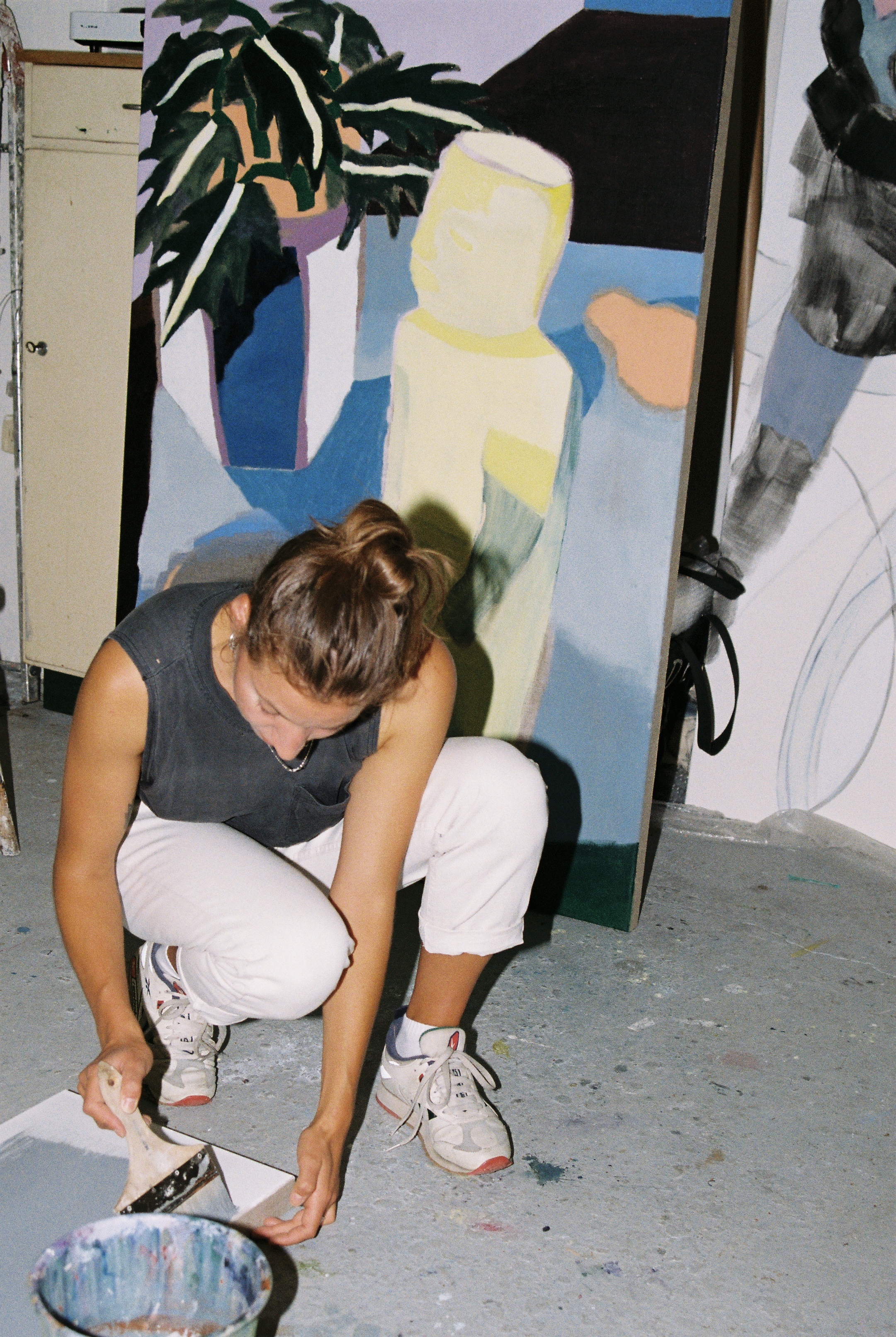

An Artist Interview #3
Lexia Hachtmann

by Lexia Hachtmann
Installation view Die Hacht (l) and Fragil (r)
2020
Against the Wall at HVW8 Galerie
Photo: Justyna Fedec
How would you describe your style?
I must admit that I am not a fan of the word style. I am trying to free myself from this institutionalized way of thinking about work. I think style always asks for category and this type of categorizing can surely be helpful in some contexts but also deceiving in others. I would prefer to speak more specifically about certain paintings, or even just parts of paintings in detail, not in categories.
Wie würdest du deinen Stil beschreiben?
Ich muss zugeben, dass ich kein Fan des Wortes Stil bin. Ich versuche, mich von dieser institutionalisierten Denkweise über die Arbeit zu befreien. Ich denke, Stil fragt immer nach Kategorien, und diese Art der Kategorisierung kann in manchen Kontexten sicherlich hilfreich sein, in anderen aber auch trügerisch. Ich würde es vorziehen, spezifischer über bestimmte Gemälde oder auch nur Teile von Gemälden im Detail und nicht in Kategorien zu sprechen.
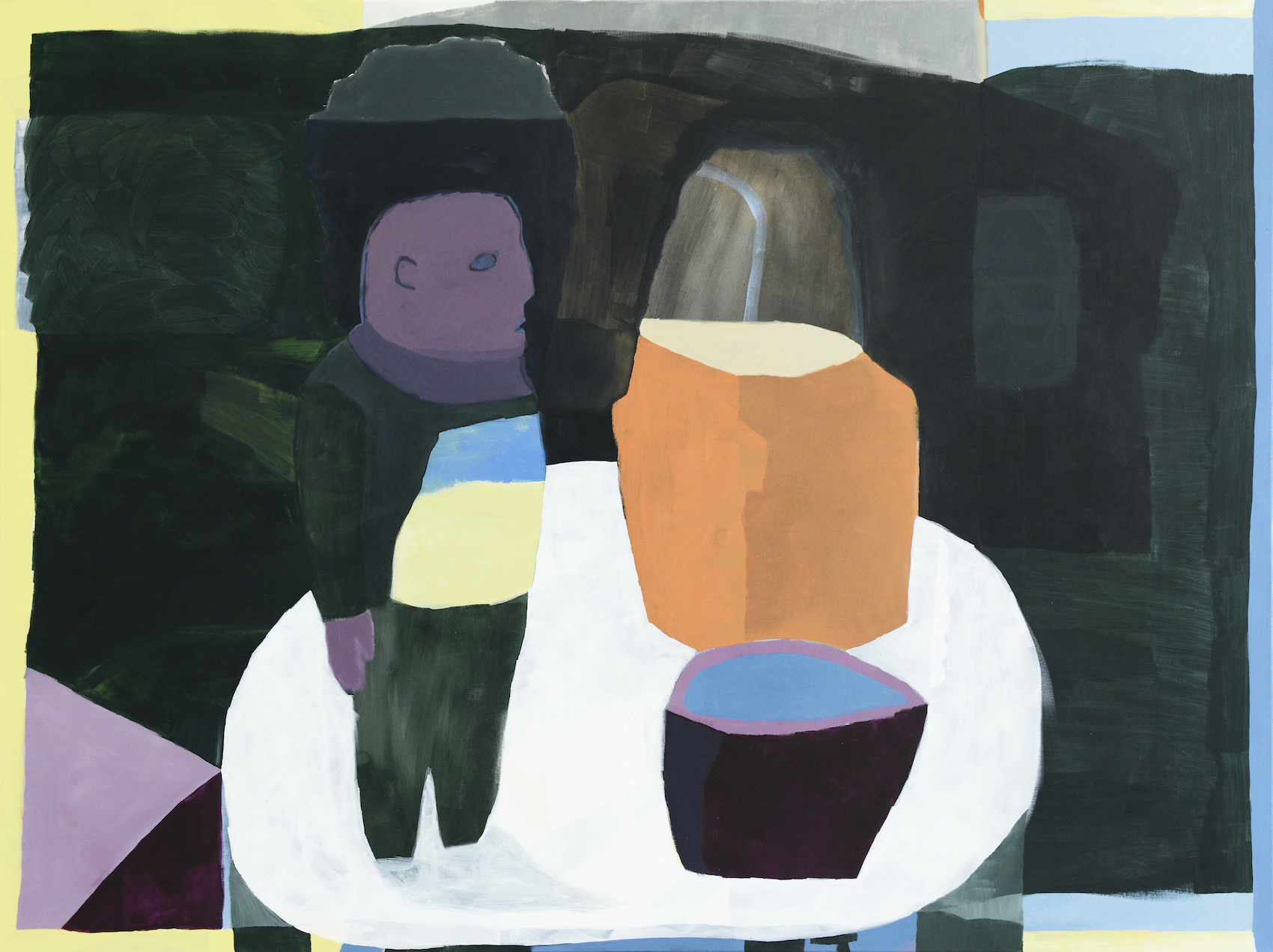
by Lexia Hachtmann
Set
2019
150 x 200cm
Acrylic on canvas
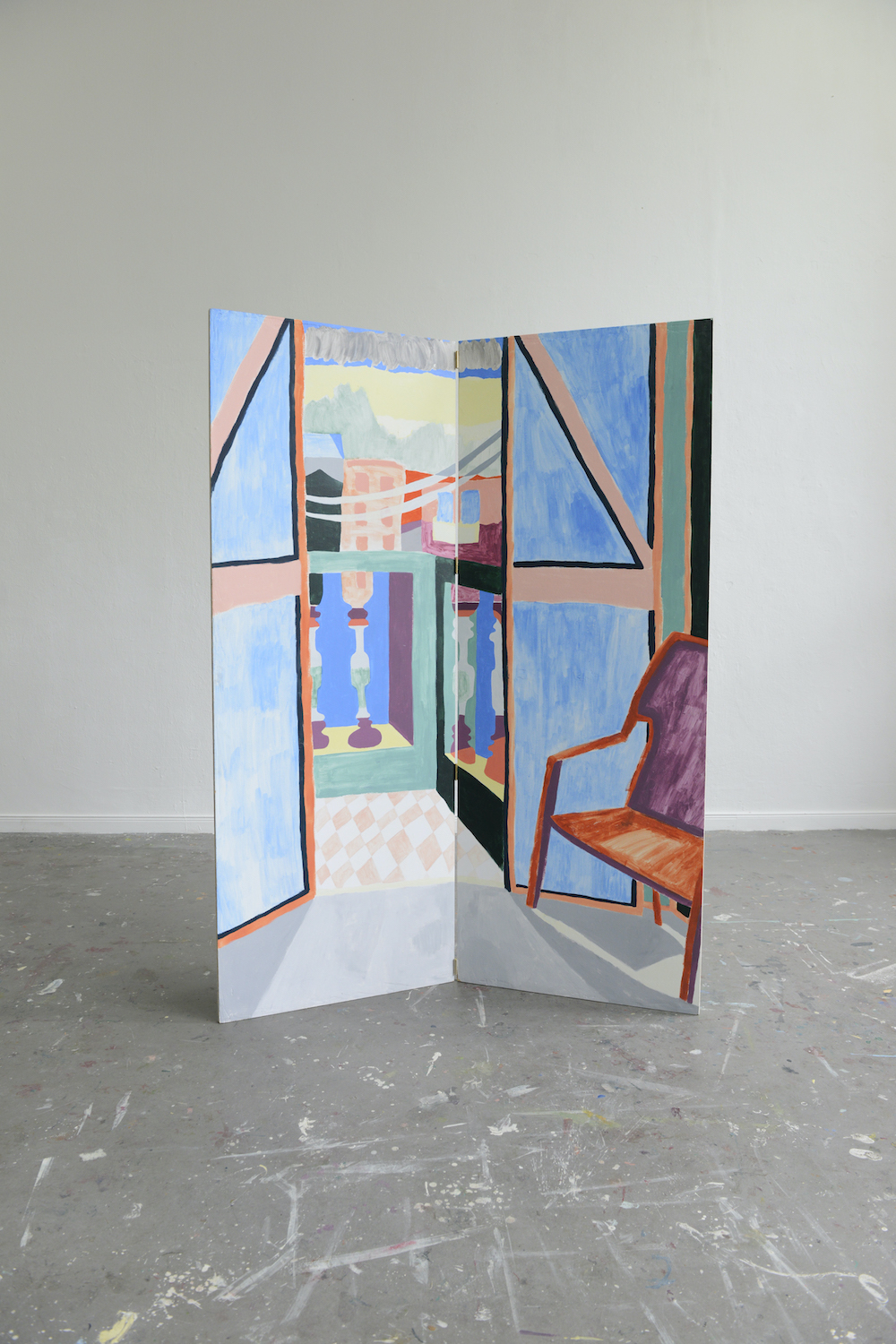
by Lexia Hachtmann
Honda
2019
200 x 200cm
Acrylic and oil chalk on wood
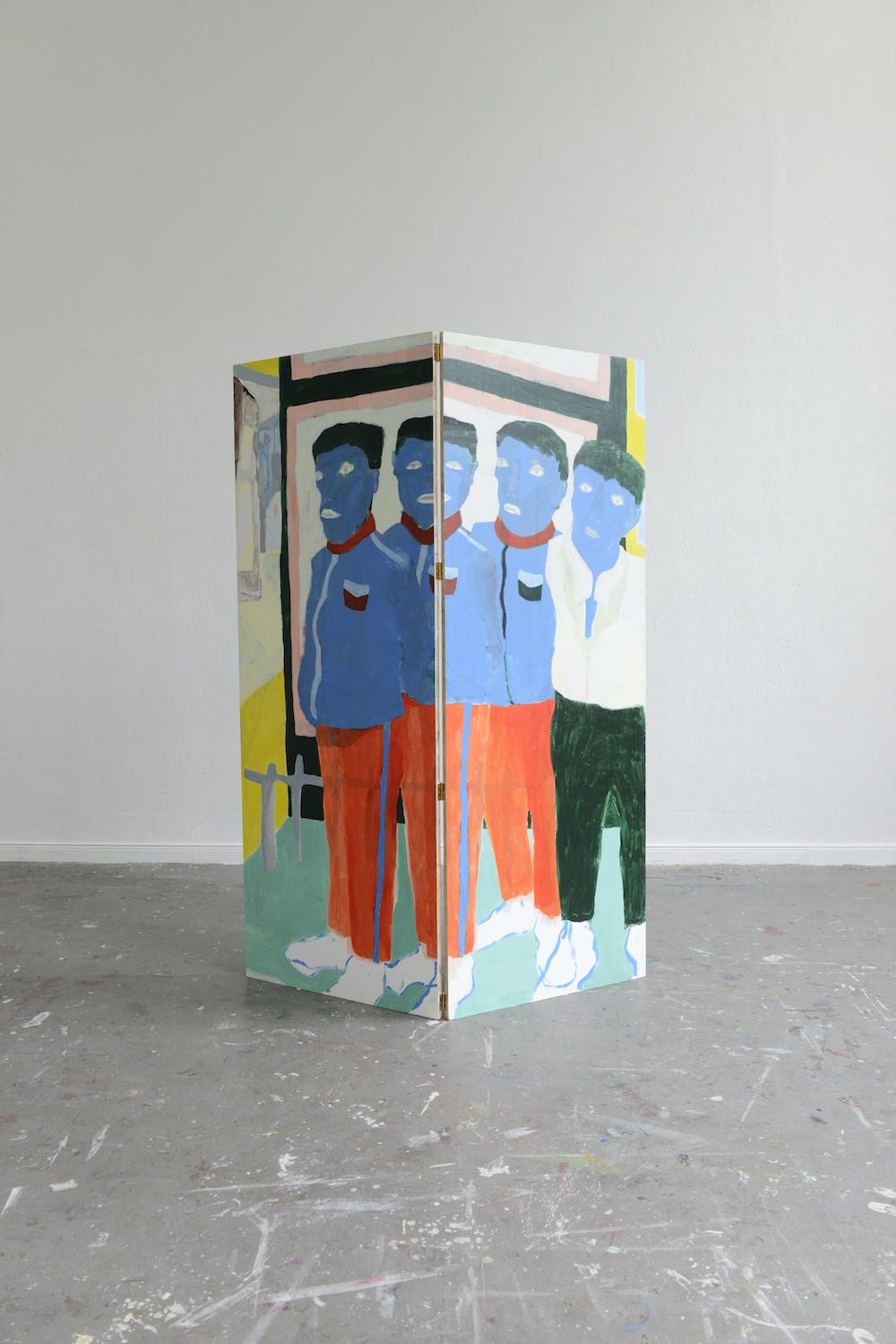
by Lexia Hachtmann
Honda
2019
200 x 200cm
Acrylic and oil chalk on wood
Which materials do you work with?
I have been switching between an array of different oil-paints and acrylics. Most recently, I started making my own tempera colours. This has been a proper revelation to me. Mostly I paint on canvas, although I have worked on wood, as seen in Honda. Oftentimes I integrate external materials into the latter process of installation. An example of this can be seen in the work JAWS, where I incorporated bricks to stock up the work in a table-like manner, in a way of creating a room of ones own and in a gesture to bring the painting off the floor. Another instance is Figur, a work I exhibited in an outdoor pool where I enveloped the painting in a transparent foil to engage with swimming pool aesthetics while finding a way to protect the work from water in a gesture of imitating the current tendency to shield, cover and mask.
I find it challenging and rewarding to alternate between mediums. I think it keeps the way of painting, and thus the work, dynamic and engaged. It is also a method to keep me from becoming too comfortable. This is also the reason why I work on big and small formats simultaneously. It keeps me attentive and active.
Mit welchen Materialien arbeitest du?
Ich habe zwischen einer Reihe verschiedener Öl- und Acrylfarben gewechselt. In letzter Zeit habe ich begonnen, meine eigenen Temperafarben herzustellen. Das war eine richtige Offenbarung für mich. Meistens male ich auf Leinwand, obwohl ich auch auf Holz gearbeitet habe, wie in Honda zu sehen ist. Oftmals integriere ich externe Materialien in den letztgenannten Installationsprozess. Ein Beispiel dafür ist die Arbeit JAWS, bei der ich Ziegelsteine einbaute, um das Werk tischähnlich aufzustocken, um einen eigenen Raum zu schaffen und das Gemälde vom Boden zu holen. Ein weiteres Beispiel ist Figur, eine Arbeit, die ich in einem Freibad ausstellte, wo ich das Bild in eine transparente Folie einhüllte, um mich mit der Ästhetik des Schwimmbads auseinanderzusetzen und gleichzeitig einen Weg zu finden, das Werk vor Wasser zu schützen, in einer Geste, die die gegenwärtige Tendenz zur Abschirmung, Abdeckung und Maskierung imitiert.
Ich finde es herausfordernd und lohnend, zwischen den Medien zu wechseln. Ich denke, es hält die Art und Weise der Malerei, und damit das Werk, dynamisch und engagiert. Es ist auch eine Methode, die mich davor bewahrt, zu bequem zu werden. Das ist auch der Grund, warum ich gleichzeitig an großen und kleinen Formaten arbeite. Sie hält mich aufmerksam und aktiv.

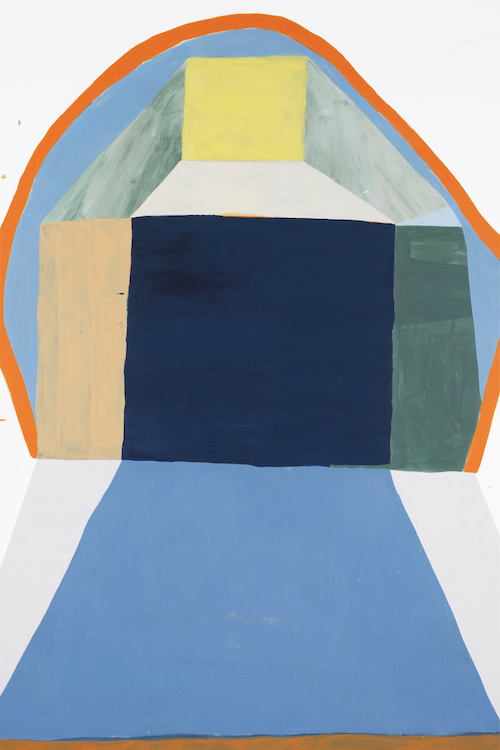
by Lexia Hachtmann
Die Schwebende
2020
250 x 150cm
Acrylic on canvas
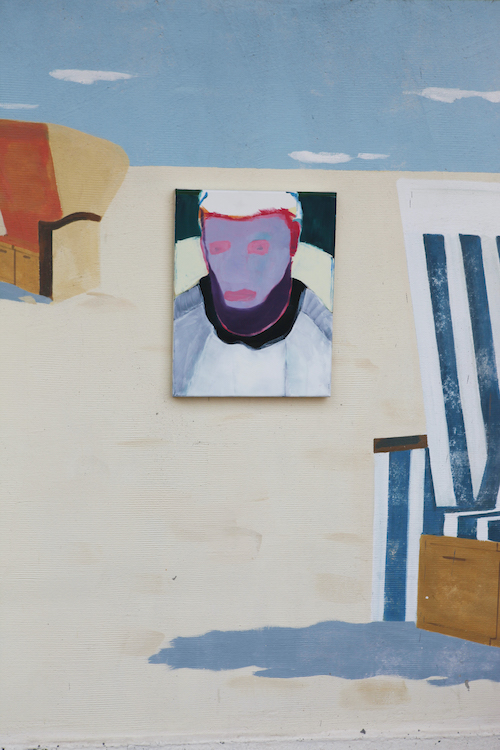
by Lexia Hachtmann
Installation view Figur
2020
Acrylic on canvas
Festspiele am Plötzensee, Berlin
Photo: Amelie Kahn Ackermann
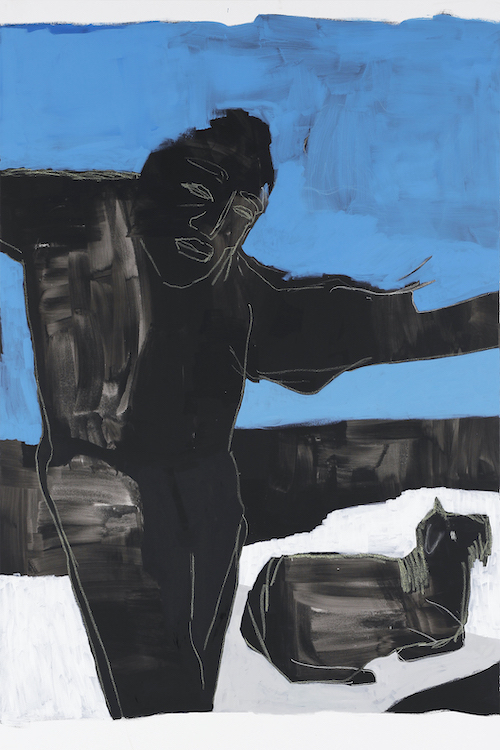
by Lexia Hachtmann
Stefan mit PH
2020
250 x 150cm
Acrylic on canvas
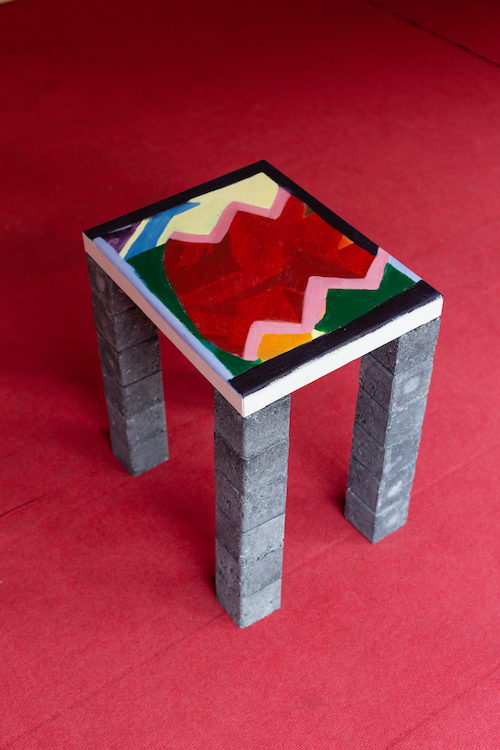
by Lexia Hachtmann
Installation view Jaws
2020
NEU:DENKEN at DELPHI, Freiburg
What influences do you have in your work?
To me, the question for influences always sounds like a question opting for a positive answer. For some reason people want to hear that influences are inspiring, good and beautiful. I think influences are beside of good or bad. They are just there. I want to divide my influences into two areas.
The first is the incidental. This is the places and people one grows up with, the situations one is confronted with or experiences on has by incident not by choice. Last year I worked with some family histories of mine, as depicted in the work Stefan mit PH, a painting about my fathers upbringing in the GDR and his relationship to Christianity, Die Hacht that touches on the topic of family heritage, or the work Die Schwebende that cites a sculpture by Ernst Barlach I grew up with, furthermore the paintings Twins and Skatrunde that depict childhood memories of mine.
The other area of influence is the observational. This is the content I seek out, the un-incidental so to say, the things that move and touch me in the everyday. I painted a series of still life's last year with objects that I found in the houses of friends as seen in the works Amelie's Figures, Set, Jug or Fragile. I find interesting in what way people select and arrange particular objects in their private rooms, and what colours and patterns they choose to live with, as seen in the works Vor Hang or Decke.
Both these areas of influence feed into my work. Interesting is that one cannot control the incidental things that happen, nor the things that are of ones interest. I see both to be dynamic and alternating so that the output, the themes and topics in the work will change with time.
Welche Einflüsse wirken sich auf deine Arbeiten aus?
Die Frage nach den Einflüssen klingt für mich immer wie eine Frage, auf die ich eine positive Antwort gebe. Aus irgendeinem Grund wollen die Leute hören, dass Einflüsse inspirierend, gut und schön sind. Ich denke, Einflüsse sind nicht gut oder schlecht. Sie sind einfach da. Ich möchte meine Einflüsse in zwei Bereiche unterteilen.
Der erste ist der zufällige. Das sind die Orte und Menschen, mit denen man aufwächst, die Situationen, mit denen man konfrontiert wird oder in denen man Erfahrungen macht, die man zufällig und nicht freiwillig macht. Im letzten Jahr habe ich mich mit einigen Familiengeschichten von mir beschäftigt, wie zum Beispiel in der Arbeit Stefan mit PH, einem Gemälde über die Erziehung meines Vaters in der DDR und sein Verhältnis zum Christentum, Die Hacht, das das Thema Familienerbe berührt, oder in der Arbeit Die Schwebende, die eine Skulptur von Ernst Barlach zitiert, mit der ich aufgewachsen bin, ferner die Bilder Zwillinge und Skatrunde, die Kindheitserinnerungen von mir darstellen.
Der andere Einflussbereich ist das Beobachten. Das ist der Inhalt, den ich suche, das Unbeiläufige sozusagen, die Dinge, die mich im Alltag bewegen und berühren. Im letzten Jahr malte ich eine Reihe von Stillleben mit Objekten, die ich in den Häusern von Freunden gefunden habe, wie in den Werken Amelie's Figures, Set, Jug oder Fragile zu sehen ist. Ich finde es interessant, auf welche Weise Menschen bestimmte Gegenstände in ihren privaten Räumen auswählen und arrangieren und welche Farben und Muster sie wählen, um mit ihnen zu leben, wie in den Werken Vor Hang oder Decke zu sehen ist.
Diese beiden Einflussbereiche fließen in meine Arbeit ein. Interessant ist, dass man weder die zufälligen Dinge, die geschehen, noch die Dinge, die einen interessieren, kontrollieren kann. Ich sehe beides als dynamisch und abwechselnd, so dass sich der Output, die Themen und Fragestellungen in der Arbeit mit der Zeit verändern werden.

by Lexia Hachtmann
Installation view Set
2020
Festspiele am Plötzensee, Berlin
Is there an approach with which you converge with new projects and what is your way of working in the further process?
Often it starts with a sketch done with my left hand even though I am right handed. This forces me to slow-down and properly study the object I am depicting or visualizing in my head. I become completely immersed in this act of understanding what I am drawing. This childlike act of humbleness is very important in my process. In German there is a very nice word for it. It's called Demut. Drawing with my left is a method to me that I use to keep myself attentive and alert. I never use erasers. Every line that is put down on the page has its importance. Sometimes I only realize later on in the process why or for what it is there. I also never work from photographs. From the sketch I move on to the canvas. I do this with my right hand. The translation process from left hand to right hand, as well as from color-less sketch to color-full painting is central to the work. Each color has its own haptic component and materiality. It is in this sense, that I construct my paintings.
Gibt es eine Herangehensweise, mit welcher du dich neuen Projekten annäherst und wie ist deine Arbeitsweise im weiteren Prozess?
Oft beginnt es mit einer Skizze, die ich mit der linken Hand mache, obwohl ich Rechtshänder bin. Das zwingt mich dazu, langsamer zu werden und das Objekt, das ich in meinem Kopf darstelle oder visualisiere, richtig zu studieren. Ich tauche vollständig in diesen Akt des Verstehens dessen, was ich zeichne, ein. Dieser kindliche Akt der Demut ist in meinem Prozess sehr wichtig. Im Deutschen gibt es ein sehr schönes Wort dafür. Es heißt Demut. Das Zeichnen mit der linken Hand ist für mich eine Methode, die ich anwende, um mich aufmerksam und wachsam zu halten. Ich verwende nie Radiergummis. Jede Linie, die auf das Blatt geschrieben wird, hat ihre Bedeutung. Manchmal wird mir erst später im Prozess klar, warum oder wofür sie da ist. Ich arbeite auch nie nach Fotografien. Von der Skizze gehe ich auf die Leinwand über. Das mache ich mit der rechten Hand. Der Übersetzungsprozess von der linken Hand in die rechte Hand, sowie von der farblosen Skizze zur farbigen Malerei ist zentral für die Arbeit. Jede Farbe hat ihre eigene haptische Komponente und Materialität. In diesem Sinne konstruiere ich meine Bilder.

by Lexia Hachtmann
Fragil
2020
150 x 200cm
Acrylic on canvas

by Lexia Hachtmann
Installation view Archive Tower (l) and Thinking Of The Other Painting (r)
2020
Against the Wall at HVW8 Galerie, Berlin
Photo: Justyna Fedec
What is your way of working in the further process?
As I work with colors, motifs and contents that reappear and cite each other, (e.g. red table, yellow chair or mountain, tower, figure, textile) the paintings function in a modular manner. This allows me to alter and reassess their presentation dependent on context and given spatial elements. I want the process of installing the work to remain playful, flexible and visible. This approach becomes apparent in Archive Tower, a work in which I stacked 67 paintings of the same format on top of one another to replicate the feeling of privacy inherent to a sketchbook as the form and height of the work denied the viewer the look inside.
I prefer to think of my separate paintings as film-stills, images caught in motion, each representing a separate frame to a broader narrative. Every set-up undergoes the phases of play, uncertainty, rearrangement, disturbance and expansion. Maybe this is why the work often feels completed to me only once it has been installed, set-up, hung, stacked, arranged or leaned against a wall, the floor, the ceiling etc. The narrative is significantly influenced by the way the work is exhibited in the space and to one another.
Wie ist deine Arbeitsweise im weiteren Prozess?
Da ich mit Farben, Motiven und Inhalten arbeite, die immer wieder auftauchen und sich gegenseitig zitieren (z.B. roter Tisch, gelber Stuhl oder Berg, Turm, Figur, Textil), funktionieren die Bilder modular. Dies erlaubt mir, ihre Präsentation in Abhängigkeit vom Kontext und den gegebenen räumlichen Elementen zu verändern und neu zu bewerten. Ich möchte, dass der Prozess der Installation des Werkes spielerisch, flexibel und sichtbar bleibt. Dieser Ansatz wird in Archive Tower deutlich, einer Arbeit, in der ich 67 Gemälde desselben Formats übereinander gestapelt habe, um das einem Skizzenbuch innewohnende Gefühl der Privatsphäre zu reproduzieren, da die Form und Höhe des Werkes dem Betrachter den Blick ins Innere verwehrte.
Ich ziehe es vor, mir meine einzelnen Gemälde als Filmstills vorzustellen, in Bewegung gefangene Bilder, die jeweils einen separaten Rahmen für eine umfassendere Erzählung darstellen. Jedes Set-up durchläuft die Phasen des Spiels, der Unsicherheit, der Neuanordnung, der Störung und der Ausdehnung. Vielleicht fühlt sich das Werk deshalb für mich oft erst dann vollendet an, wenn es installiert, aufgestellt, aufgehängt, gestapelt, arrangiert oder an eine Wand, den Boden, die Decke usw. gelehnt wurde. Die Erzählung wird wesentlich davon beeinflusst, wie das Werk im Raum und zueinander ausgestellt wird.
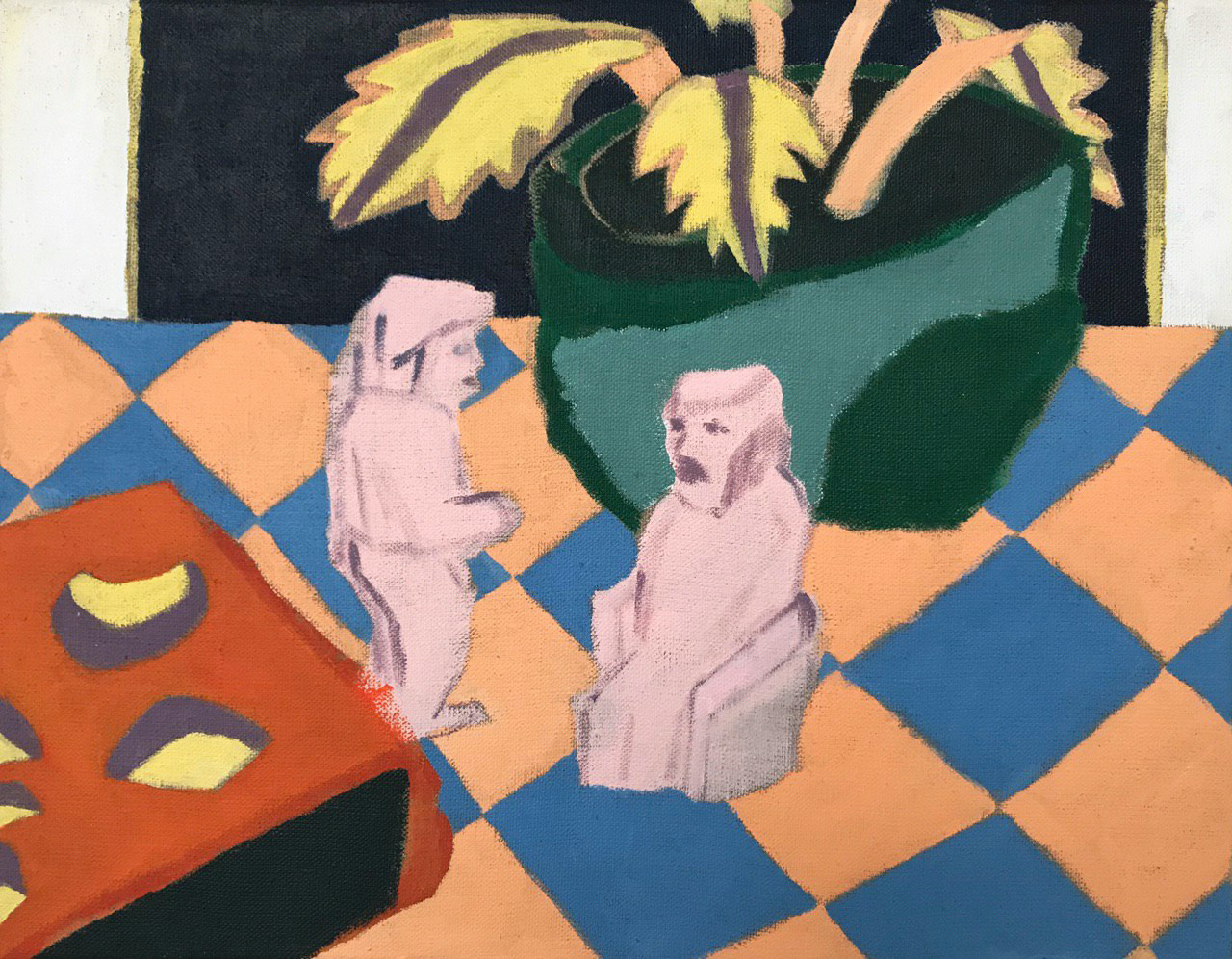
by Lexia Hachtmann
Amelie's Figuren
2019
35 x 45cm
Acrylic on canvas
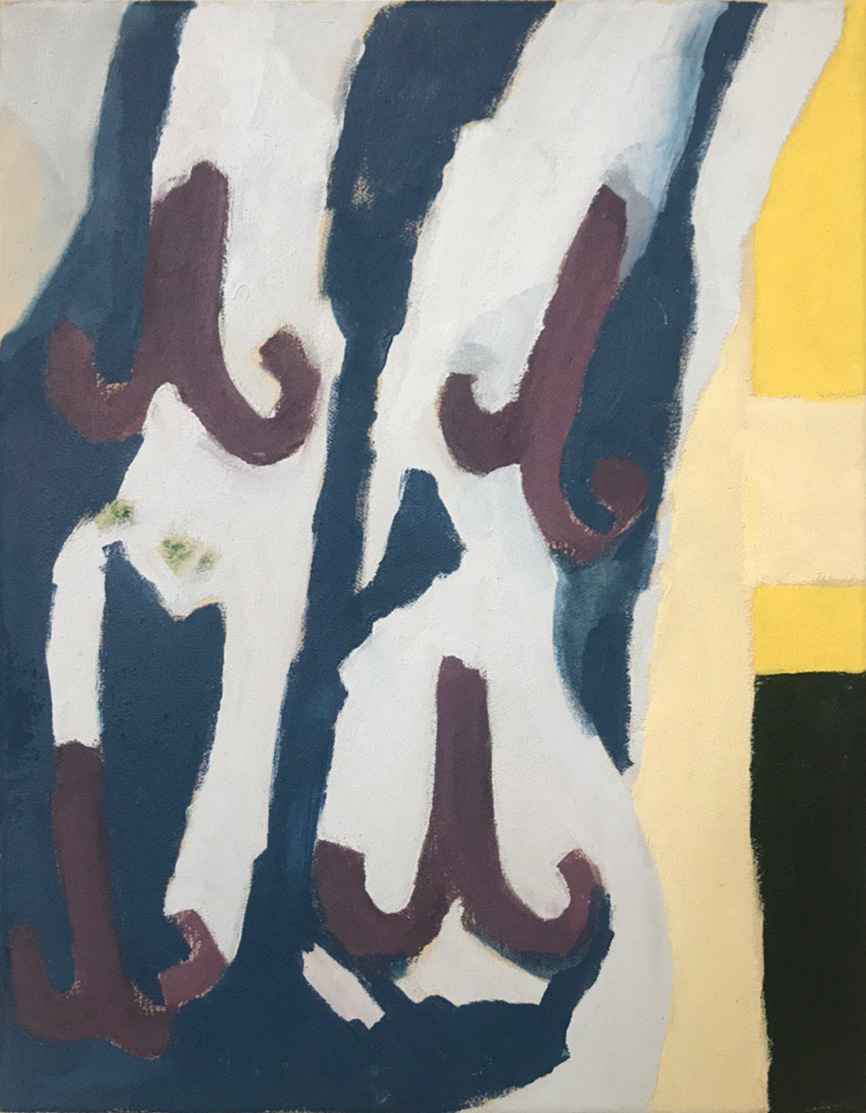
by Lexia Hachtmann
VorHang
2020
45 x 35 cm
Acrylic on canvas
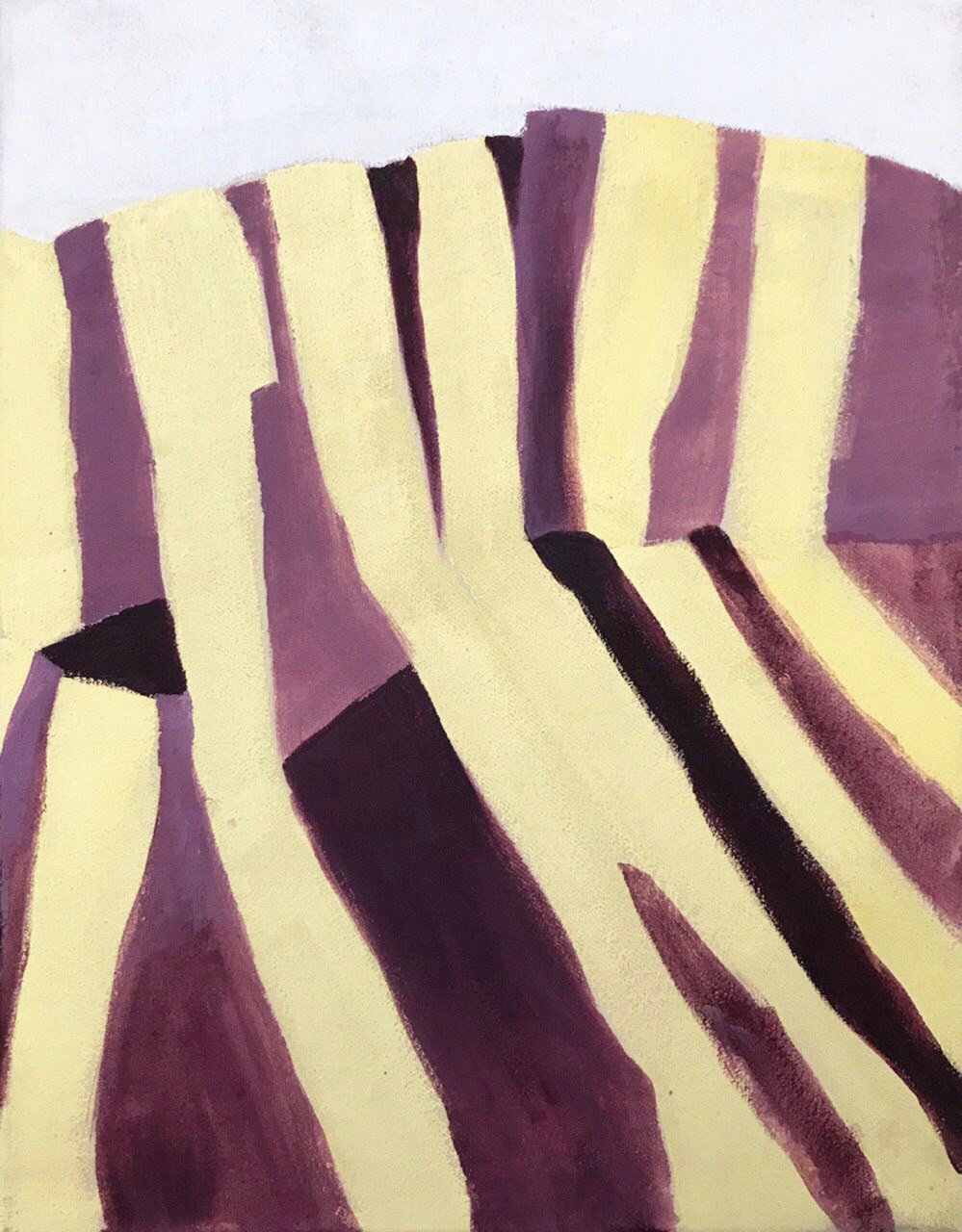
by Lexia Hachtmann
Decke
2020
45 x 35cm
Acrylic on canvas
Are there topics that particularly concern you in your art?
I am concerned with towers, arenas, jenga-games, doorways, tables, small figures on tables, plastic chairs, bedsheets, swimmers swimming on their backs, ping pong, inside-out landscapes, plants in bedrooms, sheep, hands that do things, the human figure, shoes on carpets and opened curtains. I am drawn to these particular objects. They might be topics or motives. In any case are they relevant.
I like the idea of montaging my paintings into stage-like settings and/or formats in which they can create new narratives. This can be seen in Set, where the natural surroundings and the objects introduced by other people from the outside constitute a second layer to the work. Painting, I think, lies always in the context of the in-between and the off-screen. Things that are not depicted can become the content of the work. Objects I paint, point towards others that lie outside of the frame.
Gibt es Themen, die dich in deiner Kunst besonders beschäftigen?
Ich beschäftige mich mit Türmen, Arenen, Jenga-Spielen, Türöffnungen, Tischen, kleinen Figuren auf Tischen, Plastikstühlen, Bettlaken, Schwimmern, die auf dem Rücken schwimmen, Tischtennis, Inside-Out-Landschaften, Pflanzen in Schlafzimmern, Schafen, Hände die Dinge tun, der menschlichen Figur, Schuhen auf Teppichen und geöffneten Vorhängen. Ich fühle mich zu diesen besonderen Objekten hingezogen. Es können Themen oder Motive sein. In jedem Fall sind sie relevant.
Mir gefällt die Idee, meine Bilder in bühnenähnliche Kulissen und/oder Formate zu montieren, in denen sie neue Erzählungen schaffen können. Dies zeigt sich in Set, wo die natürliche Umgebung und die von anderen Menschen von außen eingebrachten Objekte eine zweite Ebene des Werkes bilden. Ich denke, die Malerei steht immer im Kontext des Dazwischen und des Off-Screens. Dinge, die nicht dargestellt werden, können zum Inhalt des Werkes werden. Objekte, die ich male, zeigen auf andere, die außerhalb des Rahmens liegen.
Have you always wanted to become an artist?
I knew I would work creatively, but I certainly never wanted to become a painter.
Wolltest du schon immer Künstlerin werden?
Ich wusste, dass ich kreativ arbeiten würde, aber ich wollte sicher nie Malerin werden.




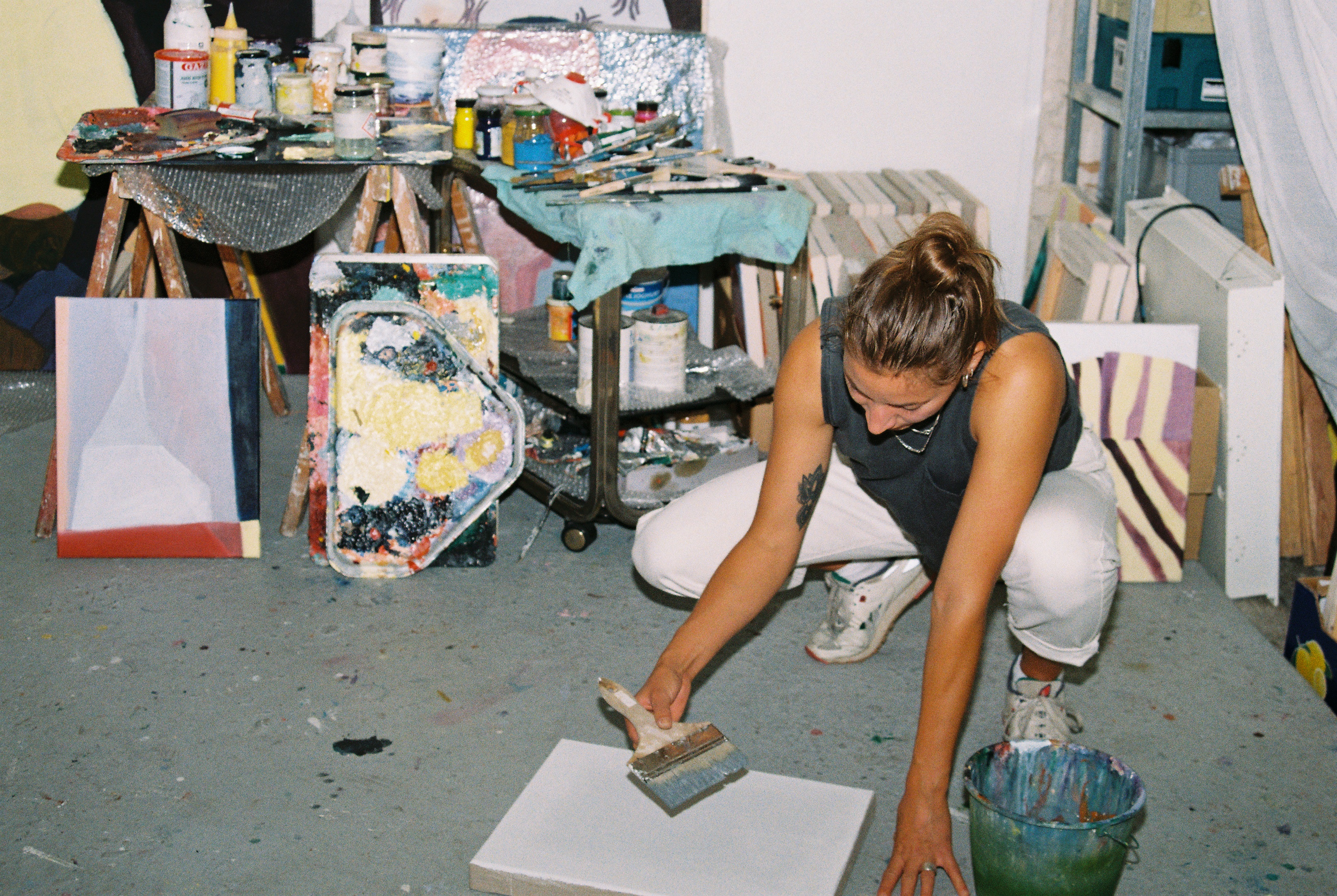
Upcoming Exhibitions
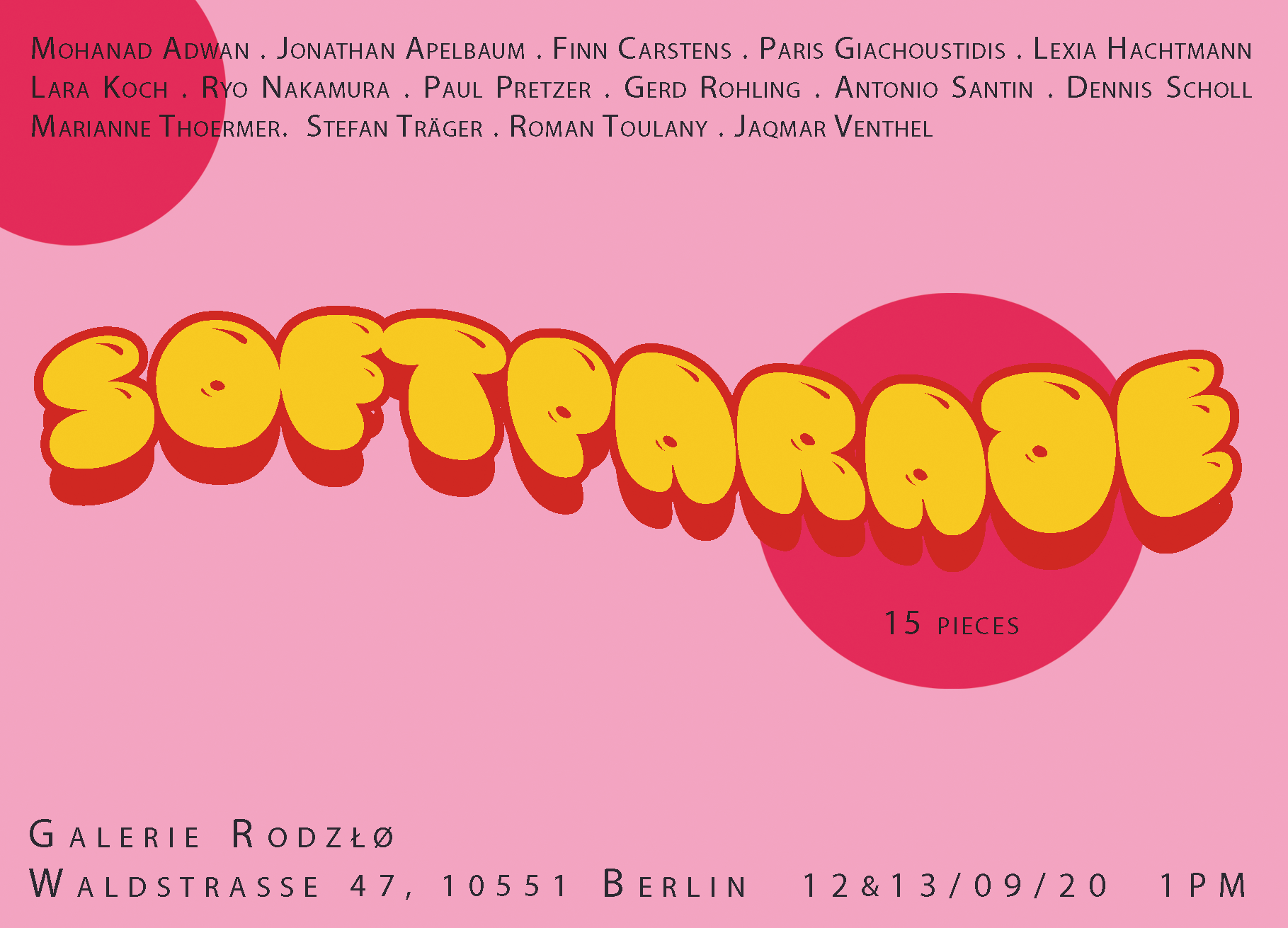

interview
Luis Bortt